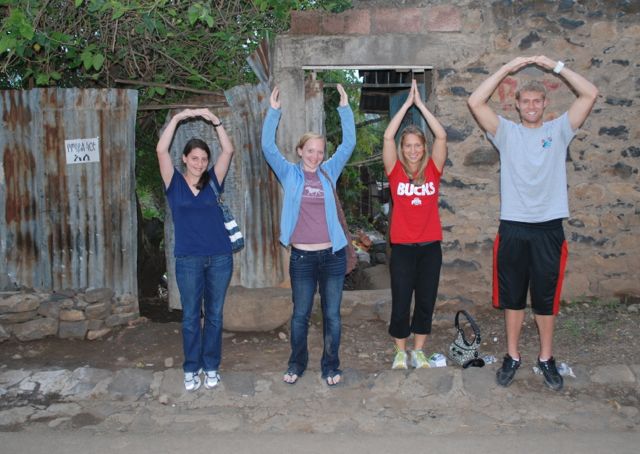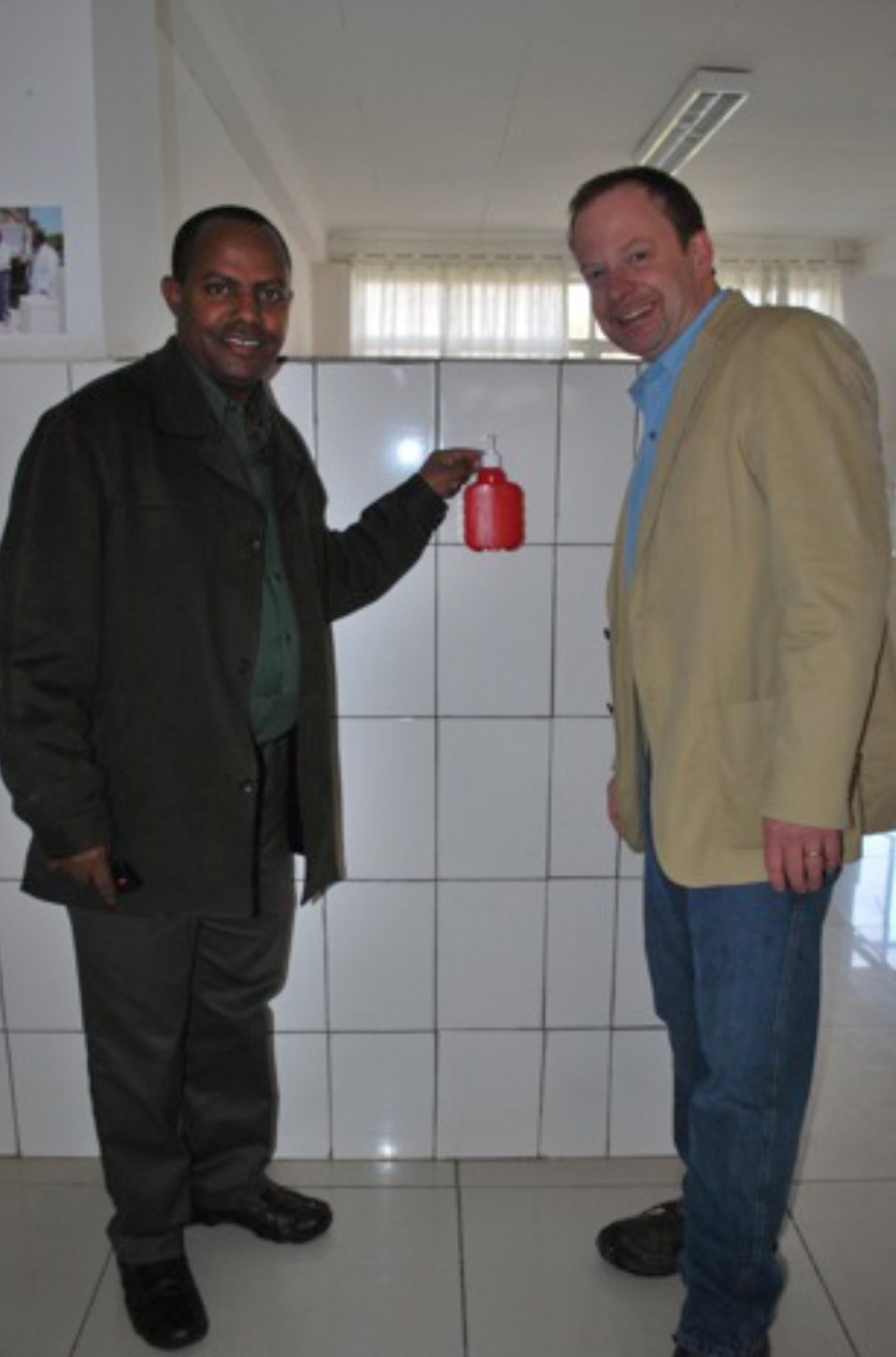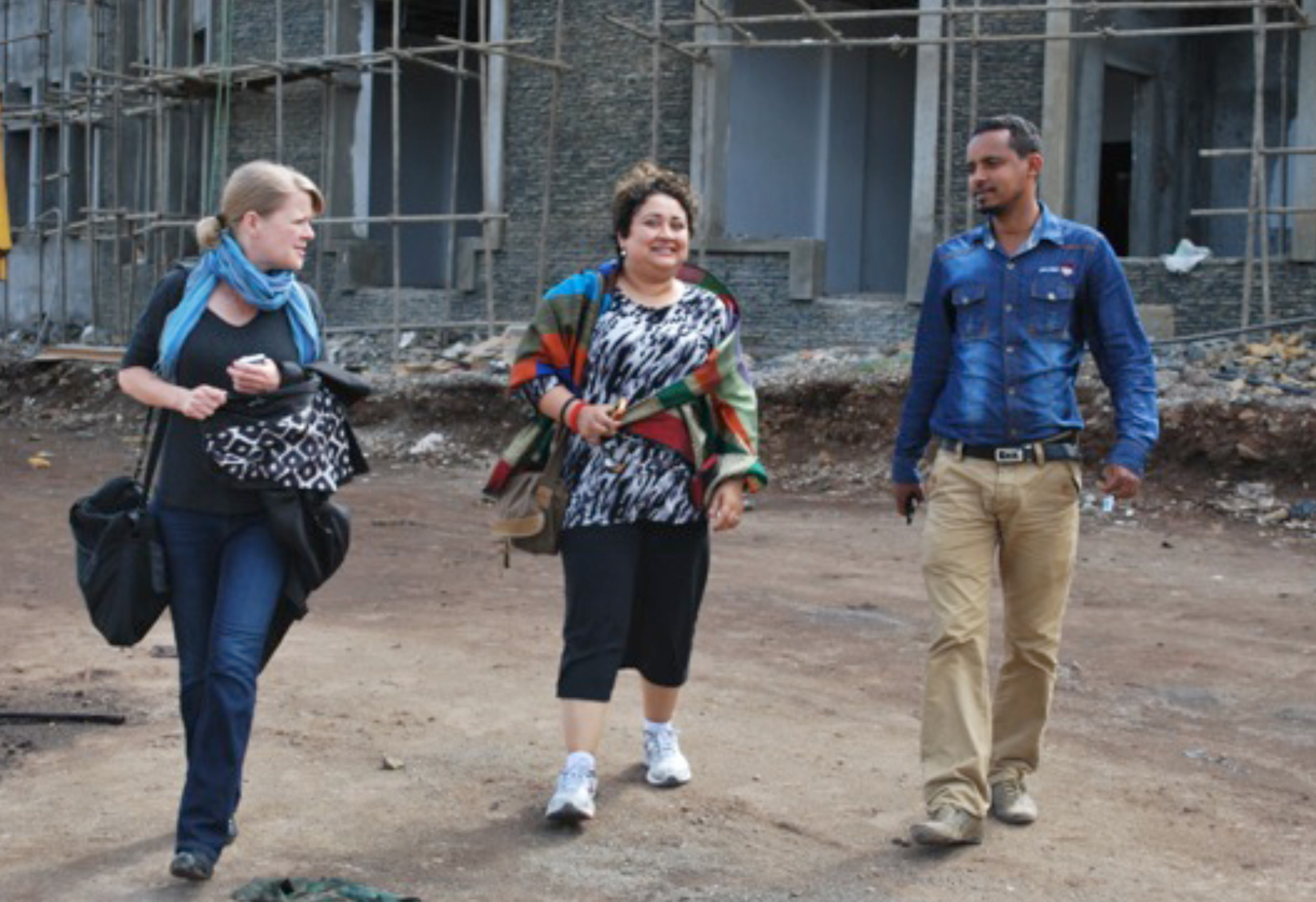
Tim Landers, RN, PhD, from Ohio State’s College of Nursing and Nora Mohammed, MSc, from University of Gondar — an infection prevention hero!
By Tim Landers, RN, PhD
Ohio State College of Nursing
“Are you from Ohio? Will you talk to me?”
Nura stopped me in the courtyard of the University of Gondar hospital. She was waving my business card that had been given to her from a School of Nursing instructor who knew that my work centers on infection prevention.
She had just defended her Master’s thesis on hand hygiene at the University of Gondar in which she completed an audit of hand hygiene practices by nurses and other health care workers at a local hospital. When she told me about her project, I was very excited to learn more, so we met the next day to review her findings.
Improving hand hygiene saves lives. Reducing transmission of germs on the hands of health care workers is the most important means of preventing infections. A recent article of mine on patient-centered hand hygiene is here. Another important article on the subject is here.
Effective hand hygiene programs use a multimodal approach, including strong administrative support, education, training, monitoring of hand-washing and feedback. A critical element of hand hygiene programs is providing products and supplies in the health care setting, and I’ve worked on the best approach for years.
But I had forgotten how critical the provision of products is in our hand hygiene efforts. Without a sink, running water, soap, or alcohol-based hand rubs, hand hygiene is simply not possible.
Quite frankly, I had come to take this for granted.
Until I met Nora.
In her study, Ms. Mohammed showed that in more than half of the “hand hygiene opportunities” – times when workers should perform hand hygiene – no soap, running water, or alcohol-based hand-rubs were available at this hospital. As a former nursing matron, or director of nursing, she saw the impact this had on patient outcomes.
By demonstrating the need to improve access, her study provides an important first step in improving hand hygiene practices.
I was really excited to meet someone who shares a passion for infection prevention and hand hygiene. She really is making a difference at her hospital and helping to save lives in Gondar. In the U.S., we call them “heroes!”
Yes, I am from Ohio, and I would love to talk to you!




